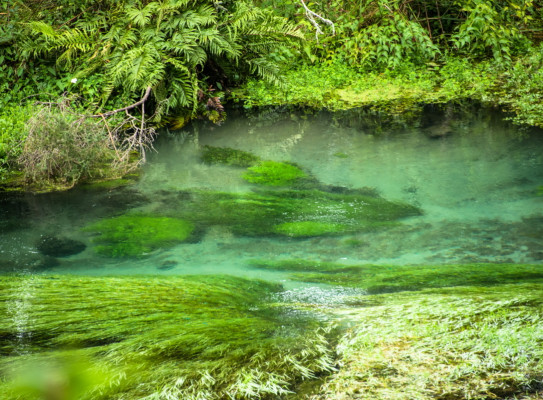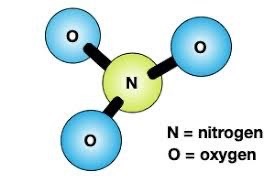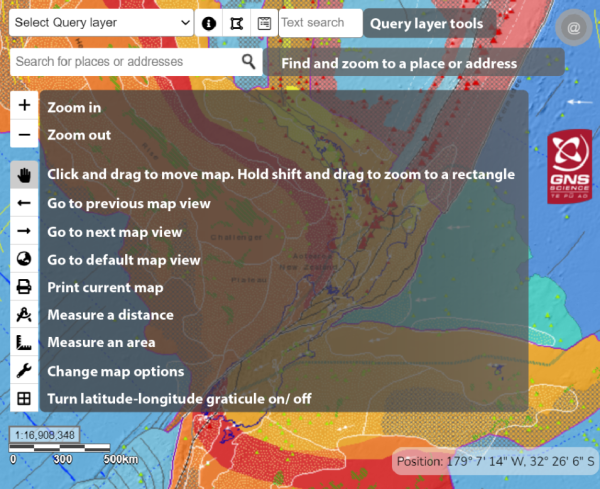NitrateWatch

Update on NitrateWatch -15th June 2024:
GNS Science is no longer testing rural drinking water samples for nitrates as the project has closed
If you require nitrate testing, free testing is still available with Greenpeace(external link) or as a pay-for-testing service at Hill Laboratories(external link)
We want to thank all participants for their support over the last two years as we have analysed more than 1000 drinking water samples from around New Zealand with our mail-in program. Our study identified at least 30 drinking water samples with nitrate levels that exceeded New Zealand’s Drinking Water Regulations limit of 11.3 mg/L affecting more than 200 residents. We will be publishing the national nitrate trends from this study in the next few months.
This research project aimed to
- Offer free, confidential nitrate testing of drinking water
- Map collected data to present nitrate patterns across regions
- Identify nitrate hotspots in regions
- Provide visualisation of regional drinking water nitrates
- Raise awareness and educate the public about nitrates in drinking water
- Compare nitrate levels across regions
To achieve these aims, our objectives were to
- Test drinking water submitted by individuals, collect the metadata and display on a map
- Provide information about nitrates, drinking water quality and how people can protect and monitor their drinking water
The project
The pilot study commenced in Northland in 2022, and was extended across New Zealand.
What is nitrate and why test for nitrate?
Nitrate is a chemical compound that occurs naturally in the environment by plants which extract the nitrogen from the air. Nitrates are also caused by decaying organic matter from animal and human wastes, and from manufactured fertilisers applied to crops and grass. Nitrates provide nutrients for plants, but too much nitrate can contaminate water and be harmful. Nitrate is made up of 1 nitrogen atoms and 3 oxygen atoms.
Nitrate is soluble in water and is used by plants as a nutrient to grow. When there is too much nitrate, it can be leached out of the soil and into the underlying groundwater.
Where groundwater is used as drinking water for humans and animals, too much nitrate is a health risk, especially for babies fed with formula made from the water. Nitrate contamination is hard to remove, so it is important to regularly monitor nitrate concentrations and monitor when nitrate levels are rising to stop further contamination and keep the water clean.
Excess nitrates in surface water such as streams, rivers and lakes can cause algal blooms and reduce the amount of fish or aquatic organism as the excess algae remove the oxygen and make the water inhabitable for the freshwater organisms.
 Figure 1: A nitrate molecule (NO3)
Figure 1: A nitrate molecule (NO3)
Standard testing methods were used to measure the nitrate concentration and the results reported directly back to the submitter within 3-4 weeks. Your data was stored confidentially, and we will not release your name, address or exact location of your well to anyone else. Your result is integrated into our database to enable all the results from each region to provide a picture of the environmental health. Together, your result will support nitrate trends in your region and determine whether the drinking water quality meets acceptable New Zealand drinking water standards.
What do the results mean
Nitrate levels are reported in milligrams of nitrate per litre of water (mg/L). Ministry of Health has set a Maximum Acceptable Value (MAV) as 11.3 mg/L for nitrate-N or 50 mg/L for total nitrate in drinking water. We report all values as nitrate-N (with an uncertainty of ± 0.1 mg/L), so if your sample exceeds 11.3 mg/L it is above the recommended drinking water standard guidelines and should not be consumed.
A result between 0 and 1 mg/L is the optimum result for drinking water. More than 80% of New Zealand’s drinking water is from town supplied water that is routinely tested, and usually has nitrate values less than 1 mg/L. Rural supplied water is usually from groundwater (private bores or springs), streams, or from rainwater. We expect only a very small number of New Zealand’s rural drinking water wells will have nitrate concentrations that exceed MAV, but with changing land-use, climate change and increasing pressure on groundwater resources for irrigation, it is important that we continue to monitor and carefully manage the quality of New Zealand’s drinking water resources.
-
Latest project summaries
Project Summary - May 2024
We have now analysed more than 900 drinking water samples from around New Zealand in the last two years. Combined with other nitrate data sourced from collaborators, our NitrateWatch database represents the largest and most comprehensive dataset showing rural nitrate concentrations in drinking water. Recently, one user of our testing service found that his drinking water contained 140 mg/L nitrate, well over the drinking water MAV of 11.3 mg/L nitrate. Suffice to say the bore owner is now using bottled water for drinking.
Over the last two years, our program has identified more than 180 people (as well as a few cats and dogs) affected by excess nitrate in their drinking water sources. While many nitrate exceedances occurred in known regions of concern such as Canterbury, Otago and Waikato, a good number of fails were a total surprise to their submitters. We can only urge you to keep routinely testing your water, especially if your drinking water nitrate levels are above ½ MAV, as these values can fluctuate with rainfall, land-use activities and climate change.
Sadly, our government funding is coming to an end, and we will have to shut down our free testing program at the end of June 2024. Please get your rural drinking water samples into us within the next few weeks if you want to check your nitrates. In the near future, we will present a public report of our findings, on a region by region basis, while protecting the confidentially of all our submitters.
Project Summary – January 2024
A recent number of water sample submissions have come in from the Hawke's Bay. Results show a wide range of drinking water quality in the region. Some surprising results have shown higher nitrate values in some areas. This may be short-term, due to Cyclone Gabrielle, or a worrying longer-term trend indicating degrading water quality. If your drinking water is from groundwater or springs, you should be testing it for nitrates annually to ensure the levels are kept below New Zealand drinking water thresholds. So far our community testing program has identified more than 135 people that were drinking nitrate contaminated water across New Zealand. These people are now aware of the issue and have changed to using bottled water or roof (rain) water, or installed reverse osmosis devices to remove the nitrate from their groundwater before use.
Project summary - December 2023
A steady demand for drinking water tests has led to around 150 enquiries for testing kits in the last month. Our average drinking water nitrate value from this study is rising and is now at 2.5 mg/L, with a median value is 1.0 mg/L. We are still keen to obtain samples from regions with low levels of data on our nitrate map (see below), including central North Island, East Coast (NI), West Coast and upper South Island.
Project summary - October 2023
A NitrateWatch pilot study commenced in Northland in 2022, and since July 2023 has been extended across New Zealand until July 2024. We have collected more than 430 rural drinking water samples so far, with the highest drinking water nitrate content of 30 mg/L. The average drinking water nitrate value from this study is 2.3 mg/L, and the median value is 0.63 mg/L. Around 4% of drinking water samples in this study exceed New Zealand’s drinking water standard’s maximum acceptable value (MAV) of 11.3 mg/L of nitrate-N.
Latest nitrate map
Nitrate results for New Zealand drinking water bores and springs (up to May 2024). Results are plotted on a 10 km2 grid, as exact bore site results are confidential. Squares represent the maximum nitrate value found in each area. Thanks to Tim Chambers (University of Otago) and Greenpeace Aotearoa for contributing their citizen science nitrate data to these maps.


Preventing nitrate from entering your drinking water
The safest groundwater comes from confined aquifers under areas that have little access by people or animals and where there is no intensive agriculture or industry. This is not always possible so it’s very important to take all necessary steps to prevent contamination. You should:
- construct your bore in a safe location
- dig a deeper bore to access a confined aquifer (if possible)
- seal and protect your bore from contamination
- regularly inspect your bore for damage
- keep nitrate sources (and other chemical hazards such as pesticides etc) away from your bore
Find more information about protecting your bore from contamination in HealthEd's pamphlet Secure Groundwater Bores and Wells for Safe Household Water(external link).
-
A national isotope survey to define the sources of nitrate contamination in New Zealand freshwaters
Rogers, K.M.; van der Raaij, R.W.; Phillips, A.; Stewart, M.K. 2023 A national isotope survey to define the sources of nitrate contamination in New Zealand freshwaters. Journal of Hydrology, 617C: article 129131; doi: 10.1016/j.jhydrol.2023.129131(external link)
Research project details
Duration
3 years
Host programme
SSIF Groundwater
Status
Phase 2: July 2022 to June 2023; Phase 3: July 2023 to June 2025
Project leaders
Karyne Rogers
Diane Bradshaw
Conny Tschritter
Funder
Ministry of Business, Innovation & Employment (MBIE) through the Strategic Science Investment Fund (SSIF)